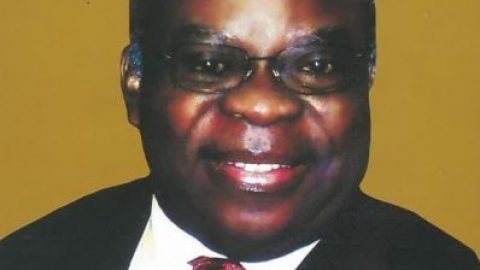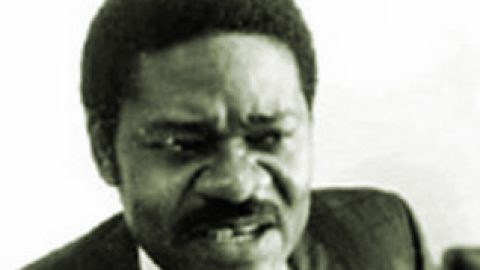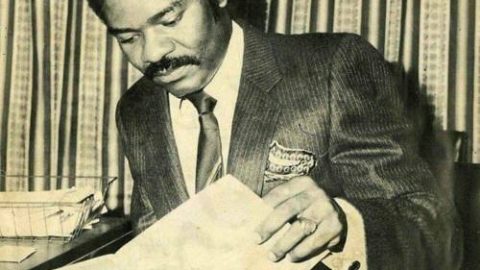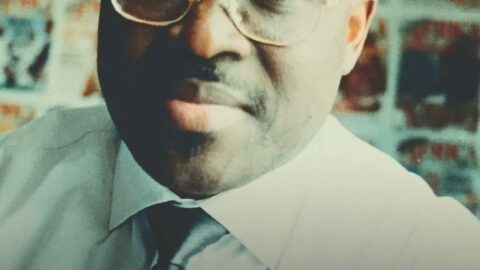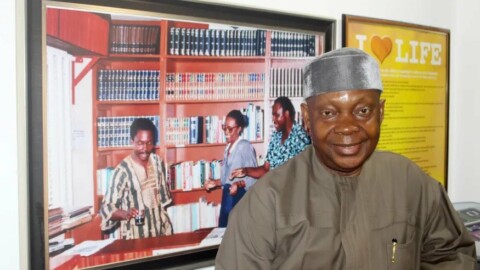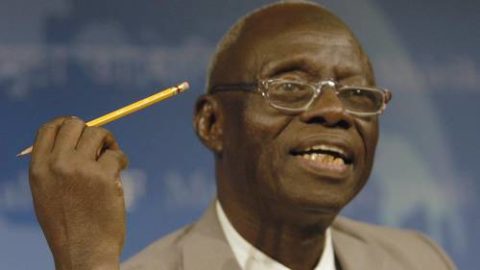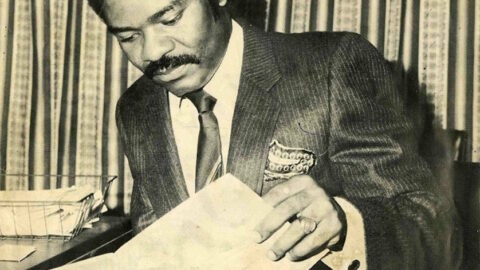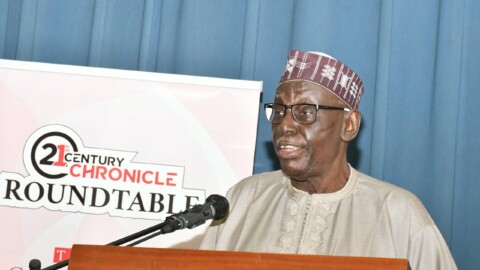A Review of The Book – LEADERSHIP TURNAROUND by Ifie Sekibo, PhD
BY SAM AKPE
This is something new — even revolutionary. Someone asks: what’s new about a book on leadership — it’s half a dozen for a dime! Agreed! They come in various shapes. But wait until you read Leadership Turnaround. It sure would turn your mind around. Trust me!
This book does not seek to dismantle old beliefs; it has already replaced them with something more pragmatic; strange, phenomenal! It discusses the transformation of leadership styles from informal family platforms to organisational, country and continental levels.
Leadership Turnaround is practice-based. This is not just about how to lead. It is about strategic or visionary leadership, or what another author, Dr. George C. Fraser, calls “transformational leadership that is scarce in our world.” I completely agree with Professor Steve Azaiki that what sets this book apart is when you examine “the background, position, exposure and experience” of the author. I will come to that soon.
I am not a banker — and I thank God for that. But imagine this scenario: a bank has been dead for more than ten years. It was not only non-operational, but completely forgotten, as though it never existed. Within this period, new banks emerged with flourish while old ones grew stronger.
Then someone suddenly appeared on the scene and declared: I can fix this bank! You can do what — bring dry bones back to life? At that time, there was no bank to fix; there was only a memory of a bank that once was — or more appropriately, an obituary. With his team, he went ahead to buy over that carcass.
The dead bank was Societe Generale Bank of Nigeria (SGBN). The man with the unseen vision was Ifie Sekibo, PhD. Ever heard of him? Now you do. He is not given to elongated laughter — at least not publicly—neither does he wear a frown. He is a boardroom veteran who seems to be perpetually at conference with his intellect.
Always impeccably dressed, whether in a casual pair of jeans, formal English wear or traditional Ijaw attire. You can hardly catch him off-guard. He obviously possesses what William Michael, in his book, Secrets of Personal Magnetism, would call a roaring personal charm and magnetism. He talks less, while his smiles seem measured, depending on whose company he is. Close friends and colleagues call him MD (short for Managing Director).
Unquestionably cerebral, in the words of Michael, when you encounter Sekibo, he seems to be invisibly surrounded by an aura of some strange power, which in a way separates him from his fellows, leaving him one of them no doubt, yet in some unseen way, towering above them. He is quiet, dignified, not “exhibitionist” in nature but clearly and calmly “predominant” even in a crowd.
A few years, later, out of the ashes of SGBN emerged a brand new bank called Heritage. How did he do it? He wouldn’t like me putting the question that way. Rather, how did they do it? He believes in the plurality of leadership even when one person is the dreamer.
This book is neither about SGBN nor Sekibo as a person. It is about transformational leadership, or an entrepreneurial spirit propelled by core values, a mission, and a shared vision. It’s about leaders who must invest in the next set of leaders or risk being categorized as the worst enemies of entrepreneurship.
Besides its endorsement by revered leadership experts across the world, what struck me as I opened the pages was its simplicity of language. You would expect a Harvard-trained leadership scholar to showcase some intellectual depth through brain-rebooting jargons. No, it’s a matter of mindset; because mindset determines the outcome of every endeavour — including the purpose of this book and the language that best serves that purpose.
The book defines vision, which is the foundation for every project, as the vehicle of leadership. It is believed that a leader without a vision is a leader without direction; and that its best usage as a vehicle is when the leader motivates others to believe in their can-do spirit. In the words of John C. Maxwell, this is what makes a real leader. “Because success does not rest on his or her shoulders. Instead, it is gained through the combination of the strengths of the entire team working together.”
Mindset is a central theme in this book. The author defines the mind as a machine that churns out whatever the owner ambushes there. He believes that every leader should have the mindset of an entrepreneur — someone who can’t be stopped by obstacles. An entrepreneur is that person that is constantly on the lookout for people he can convince to buy into his vision. He is a team player, an inspiration, and a confidence builder.
SGBN became Heritage Bank when Sekibo transferred his mindset to his team — an attitude that defied all obstacles; a mentality that refused to focus on the problems; a growth-centered mind with a common vision; a positive habit that sees setbacks as stepping-stones to great heights.
The resuscitation, repackaging and rechristening of SGBN is an indisputable proof that vision without attitude, or a vision that lacks building partners and like-minded team members, will fail. This book makes it clear that people excel more in an atmosphere of competition, than cooperation because a competitive spirit ignites fresh ideas.
One bold revelation in this book that would jolt the old and inspires new entrepreneurs is that for over one hundred years in Nigeria, no organization has transitioned from one generation to the next. Reason? Succeeding leaders were not a part of the original mindset. That is, they were not initiated into the vision. So, the enterprises were not developed for tomorrow — only today. The way out is to deliberately change from ‘I’ to ‘we’ strategy.
This is possible through teamwork, mindset, vision, attitude, and shared opportunities. The conclusion here is that good leaders generate ideas, give them to others to execute while they supervise or pull the required strings. They deliberately distribute rather than ambush the vision.
I saw two hair-raising expressions in this book — one familiar, the other strange. They are globalisation and glocalisation. The first is well known, the second is a coinage, meaning: being local with global perception.
The author believes that organisations do not need to go global to earn recognition. You can be global in study or adaptation of ideas but local in application because it is the little thing you do in your small corner that will eventually attract global attention. He admonishes: “let your local leadership transmit and catapult you into global relevance… As a rule of the thumb, we must first think local before thinking global”
It is his opinion that every organisation should first impact its local community and country before stepping out there for the big competition because it is local leadership that gives a person global attention. The final word is for entrepreneurs to think global and act local.
Emotional intelligence is a topic that is beautifully handled by the author under different sub-headings such as: ‘models of leadership’ and ‘are leaders hope dealers?’ It is his belief that leaders who are intelligent enough to deposit positive things in the lives of those who work with them would surely reap rewards of loyalty and productivity.
Then he goes spiritual by employing faith as success trigger in business. Sekibo states that every entrepreneur operates or should operate on the platform of faith. You want to argue? Then wait until fear steps into your plans. It is your faith in your Maker and your vision that will make others hang in there despite unforeseen turbulence. Faith enhances optimal thinking, which means defying every odd to hit the target. It suppresses negative imaginations.
Chapter Six of the book is headlined The Refinery. Funny! Isn’t it? There is a sub-heading entitled: appreciate lessons of failure. It’s a beautiful revelation. Most times, people are only interested in breakthrough stories and not eras of trials and failures.
The author wants entrepreneurs to be inspired more by experiences of other people’s failure than their accomplishments. Reason? They teach you what mistakes to avoid in decision making. This is because when you know where and why someone failed, then you can easily avoid the pitfalls.
The next chapter discusses why entrepreneurs should think and organise for the next generation. Sekibo is an apostle of the belief that every entrepreneur must look beyond his generation. Don’t ambush ideas and die with them. Leadership demands that you birth an idea, nurture it and pass it on. You do not have to be there for the idea to flourish.
As one leadership expert once said, every leader should start grooming successors on his first day at work. That means, don’t retire with the leadership baton in your hand. Pass it on! Leadership is transferable. Don’t enshrine it. The worst leader is said to be one without a successor. A good leader must share his vision with his team by creating in them the joy of ownership of the vision.
It is required that for any organisation to outlive the founders, there must be generational transfer of its core values, the mission and the vision. There should be no individual “custodian of the vision.”
I saw something seemingly controversial in one of the chapters. In business schools, students are taught to determine their vision, then the mission, before attaching the core values. But this book differs. It states that in real practice, the first thing is to define your core values, which includes admitting who you are, then decide on how you can make a difference, which is your mission; before stating your destination—your vision.
You don’t agree? Then look at this: Sekibo states that articulating, a vision and a mission before creating core values would metaphorically mean that in building a house, you must first scout for contractors, and acquire building materials before looking for an architect to design the building. Dumb approach! Isn’t it?
He argues that it is the core values that constitute the dream or the vision. Every dream begins with the core values. Then you move on to determine how these core values would become a reality — the mission. It is the mission that will accomplish the vision—the house! I’m sure, some eggheads, somewhere, will disagree with this.
Moving on, the author is emphatic that human element, not only money, is the backbone of success in any business. Even with all the money, the right environment and adequate planning, he believes that when you lack appropriate human capital needed to execute the proposals, they will remain mere paperwork.
It takes a business leader in the mould of Sekibo to birth these and other unusual entrepreneurial inventions. A banker and an entrepreneur, the author is an alumnus of the ageless Harvard Business School, Class of 2006-2009. He is a former executive vice chairman of International Energy Insurance, and a fellow of the Institute of Chattered Accountant of Nigeria (ICAN), among others.
Sekibo has a track record not only in organizational leadership and management, but also in resuscitating ailing industries. His managerial expertise took a turning point in 2003, when he, alongside other partners, acquired the relatively dead Global Assurance Company Limited. As the point man, he spearheaded the company to a competitive edge with the best in the industry and was listed on the Nigerian Stock Exchange.
This book is not a theoretical academic handout. Discussions are based on facts and realities. Every conclusion is drawn from the author’s personal experiences. He lays no claims to infallibility of views. But when you consider his managerial and leadership pedigree, you are persuaded to believe him. He does not talk like someone from the ivory tower, but as one whose ideas have gone through the mill.
There is a remarkable discussion on philanthropy. Here, Sekibo thunders loud and clear: stop or reduce handout to the poor, instead, invest in them. Give them hope through academic pursuit, or cause them to learn a craft or trade. In his words, “enhancing human capacity is what philanthropy is.” In almost every chapter, he makes references to Biblical citations and interpretations to support his positions.
From the home front, Sekibo takes on leadership issues in Africa. Here, he draws a line between failing and succeeding nations and traces each to leadership and followership. It is clear from his presentation that every follower has the capacity to create the kind of leadership he wants. It boils down to mindset.
His analysis of the history, economy and perception of Africa by the Europeans or Americans end with a bold conclusion, that “Africa requires equal partnership in investment, particularly long term investment,” and that young, vibrant and innovative minds are all over the continent waiting for support and proper grooming by entrepreneurs.
It never occurred to me that business could be discussed in simple terms until I read Leadership Turnaround. This book is down to earth. Sekibo, as an entrepreneur, identifies and turns problematic issues into opportunities for wealth creation. On each page, you can picture him driving ideas, taking charge, inspiring, and leading a team, while making critical decisions.
While I cannot lay claims to the perfection of this book—I saw a few typos—I cannot but conclude boldly that each of the 175 pages comes loaded with revolutionary ideas, which have been tested and proven by the author.
Let me conclude that the book is a personification of the author. From the front to the back covers, there is something magnetic about it. Ifie Sekibo’s persona fits the words of William Michael: a calm, dignified individual. I’m not sure he is “unconscious of his strong magnetic quality.” Perhaps, he has deliberately developed this “magnetic personality being fully aware of the advantage of such a characteristic and making use of his ability to develop it in the interest of business and some similar reasons.”
Every word, every sentence and every paragraph in this book seems as though cast in stone or sculptured for impact. As you open each page, radical ideas and suggestions keep dropping into your intellect with overwhelming influences that drive away old beliefs and conventional wisdom. I guess you have sure been turned around!


